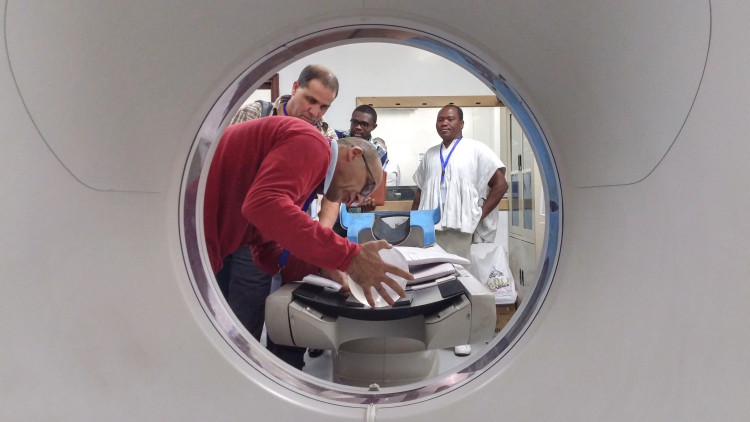A new publication by the International Atomic Energy Agency (IAEA) provides guidance for the certification of clinical medical physicists as part of efforts to address a shortage of qualified professionals in the field around the world. Medical physicists ensure radiation doses are applied correctly to patients and are key to the safe and effective use of radiation medicine, for instance, in the battle against cancer.
The Guidelines for the Certification of Clinically Qualified Medical Physicists aims to overcome global challenges to obtain professional recognition in the field and to harmonize certification processes internationally. The 40-page document spells out criteria for the establishment of national certification schemes and for the registration of medical physicists and provides recommendations for their continuous professional development.
Marie Skłodowska-Curie is credited as being one of the first medical physicists, having introduced the principles of physics to the field of medicine for the diagnosis and treatment of diseases. Today such professionals play a fundamental role in the detection and treatment of many conditions, and ensure that radiation-emitting medical equipment and sources produce the right amount of radiation to perform high quality diagnostic imaging, or dispense safe and effective doses for radiotherapy treatment. They collaborate with radiation oncologists, for example, to optimize and evaluate cancer treatment using complex radiotherapy machines, so that the prescribed amount of radiation targets only the disease and spares healthy tissues.
The IAEA has been supporting the development of a qualified medical physics workforce for decades. This work includes promoting access to high standard postgraduate education and clinical training programmes, as well as the provision of continuous professional development opportunities to enhance the competencies of clinically qualified medical physicists.
“Medical physics has been included in the health occupational category by the International Labour Organization since 2008, but there is still a scarce understanding and recognition of this healthcare profession in many countries,” said Giorgia Loreti, medical physics training officer at the IAEA’s Human Health Division. “This not only undermines the contribution of medical physicists to patient care, but also translates into a lack of qualified personnel, as medical physicists don’t often have the opportunity to acquire competencies in structured hospital-based clinical training programmes, like other healthcare workers.”
Since 2014, the IAEA has sponsored an Advanced Master Programme in Medical Physics, run jointly by the International Centre for Theoretical Physics and the University of Trieste, which offers academic and structured and supervised clinical training in a hospital. The Agency also provides educational material, such as handbooks, video tutorials and e-learning courses, freely available on its Human Health Campus website.
A 2015 Lancet Oncology special edition on increasing global access to radiotherapy estimated that 22,000 additional medical physicists alone would be needed to cover radiotherapy needs in low- and middle-income countries by 2035. “The IAEA guide aims to boost recognition of the medical physics profession and to sharpen the focus on the importance of quality education and clinical training,” said Debbie van der Merwe, Head of the Dosimetry and Medical Radiation Section at the IAEA. “The goal is to ensure that national certification processes are in line with international best practices and can help fill the gap in the number of qualified professionals worldwide.”
“We were happy to endorse this document as the guidance will promote a quality assessment of human resources in the field globally,” said Madan Rehani, President of the International Organization for Medical Physics, which represents over 27,000 medical physicists worldwide.
The document is aimed at Member States that do not yet have a national certification scheme for medical physicists in place.
“Patients deserve and expect to be given the best care possible and the IAEA publication sets a standard that can be applied globally for the education and training of medical physicists to perform this service safely and effectively,” said Raymond K. Wu, Chief Executive Officer of the International Medical Physics Certification Board, a professional entity that has also endorsed the publication.


